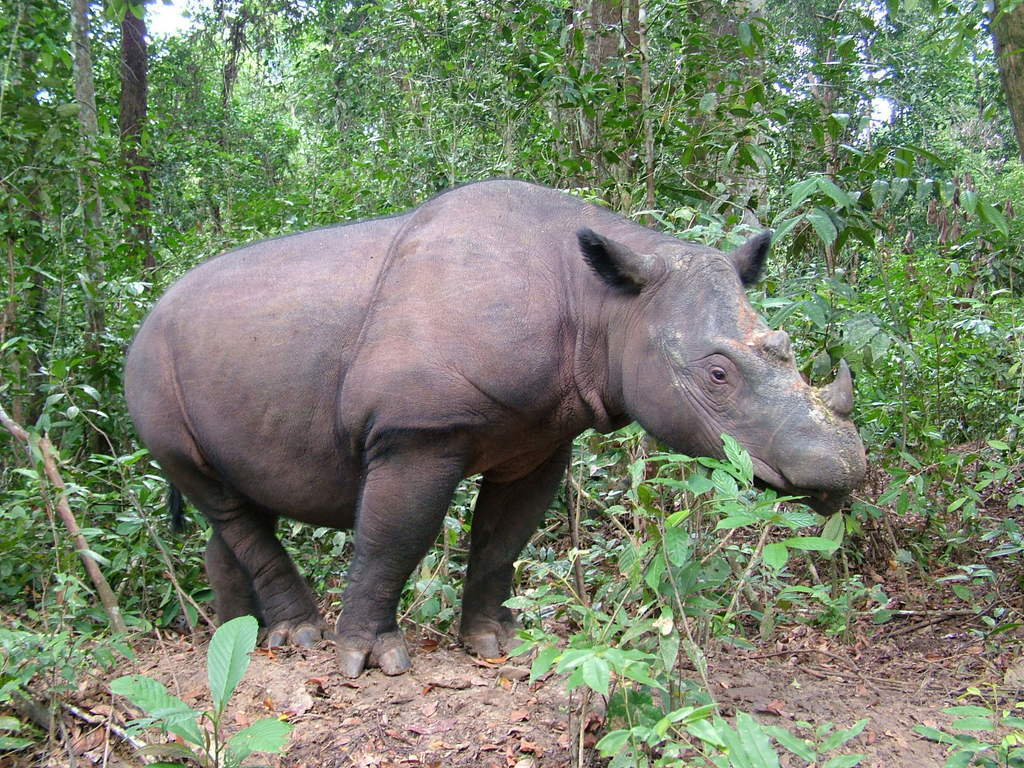The Sumatran Rhino Crisis Summit opened with the shocking news that rather than 130-190 Sumatran rhinos as previously estimated, there are in fact fewer than 100 individual animals. This sobering news gave us the incentive and urgency we needed to come up with a series of initiatives that will lead to the rapid development of a 2-year emergency plan. It was heartening to see the energy and commitment from those present at the meeting, and if the plan is followed through with all the actions we discussed, then we really do have a good chance of saving the Sumatran rhino. Save the Rhino will do all that we can to support these efforts.
See below for the full press release from the IUCN
Last chance for the Sumatran rhino
04 April 2013 | International news release
With population estimates of Sumatran rhinos (Dicerorhinus sumatrensis) reduced to less than 100 individuals, a ground-breaking agreement to save the Critically Endangered species was reached today between representatives of the Indonesian and Malaysian governments. The agreement was formed at a summit convened by the International Union for Conservation of Nature’s Species Survival Commission (IUCN SSC), involving a wide range of international and national organisations.
This is the first time the two countries join their efforts to address the dire state of the species, of which the last wild populations are believed to survive in Sumatra, western Indonesia and Sabah, Malaysia. The two governments now need to formalize the collaboration and agree on the next steps to tackle the Sumatran rhino crisis. Experts gathered at the summit have made a proposal for a two-year emergency action plan as an immediate follow-up to the event.
“Serious steps must be taken to roll back the tide of extinction of the Sumatran rhino,” says Widodo Ramano, Executive Director of Yayasan Badak Indonesia (YABI). “This could be our last opportunity to save this species and, by working together as a collaborative unit, internationally and regionally, with an agreed vision and goals, a glimmer of hope has been clearly demonstrated. We need to act together urgently, hand in hand, replicating some of the inspirational successes of other conservation efforts and aim to stop any failures that might impede progress.”
“We would like to reiterate Sabah’s commitment and our willingness to further discuss with Indonesia opportunities to exchange reproductive cells of the species, move individual rhinos between our countries and to employ advanced reproductive technology as a parallel initiative in the Sumatran rhino captive breeding programme,” says Datuk Dr Laurentius Ambu, Director of the Sabah Wildlife Department, Sabah, Malaysia.
More than 130 rhino experts, scientists, government officials and representatives of non-governmental organizations from around the world gathered in Singapore this week to find solutions to the Sumatran rhino crisis, drawing on lessons learnt from previous conservation successes of other rhinos and species such as the Californian Condor, the Black-footed Ferret and Hawaiian forest birds.
“The Sumatran Rhino Crisis Summit has been transformational by bringing together the two governments whose representatives committed to positive and proactive bilateral collaboration which is critical for saving this enigmatic species,” says Mark Stanley Price, Chairman of the IUCN SSC Species Conservation Planning Sub-Committee. “Huge progress has been made in specifying the resources needed to improve rhino surveys, security and monitoring. We have also explored the potential of new technologies and the role of integrating the management of wild and captive individuals.”
The Sumatran rhino is the smallest and last form of the two-horned rhino in Asia that has lived on the planet for 20 million years. It is one of the world’s rarest rhino species. Two rhino subspecies, the Western Black rhino (Diceros bicornis longipes) and Rhinoceros sondaicus annamiticus – a subspecies of the Javan rhino – have officially been declared extinct since 2010.
For more information or to set up interviews, please contact:
Ewa Magiera, IUCN Media Relations, m +41 79 856 76 26, ewa.magiera@iucn.org
Participants at the Sumatran Rhino Crisis Summit:
IUCN SSC, Borneo Rhino Alliance (BORA, Malaysia), Land Empowerment Animals People (LEAP, Malaysia), Fauna and Flora International (FFI Indonesia), Rhino Foundation of Indonesia (YABI), Indonesian Zoo and Aquarium Association (PKBSI), International Rhino Foundation (IRF), Leuser International Foundation (LIF, Indonesia), Wildlife Conservation Society (WCS Indonesia), Taman Safari Indonesia (TSI), WWF and SOS Rhino US, YABI (Yayasan Badak Indonesia), IUCN SSC Asian Rhino Specialist Group.
The event was hosted by Wildlife Reserves Singapore Group (Jurong Bird Park, Night Safari, River Safari) at Singapore Zoo, while Sime Darby Foundation, WWF, IUCN SSC, IRF, PKBSI and TSI provided funds and resources.
……………………………………………………………………………………………………………
March 2013
Discovery of Sumatran rhino footprints
Just a week before the Sumatran Rhino Crisis Summit, a team of researchers from WWF announced that they had discovered Sumatran rhino footprints in West Kutai, East Kalimantan province, on Borneo island, a location where the species was previously thought to be extinct. Click here to read the WWF statement.
Experts taking part in the survey are uncertain as to whether the footprints are from a group of rhinos or just one remaining individual. WWF Indonesia say it will launch a follow up and more comprehensive survey to map the rhino’s habitat preference and population in West Kutai.
Some individuals have criticised WWF’s decision to announce its findings, saying the area lacks adequate protection to ensure the safety of rhe rhino in West Kutai. By publishing its findings it is possibly opening up the possibility of poachers in the area.
However WWF defended its decision claiming that the announcement was made to promote public awareness and raise political commitment from the government to protect endangered species.









